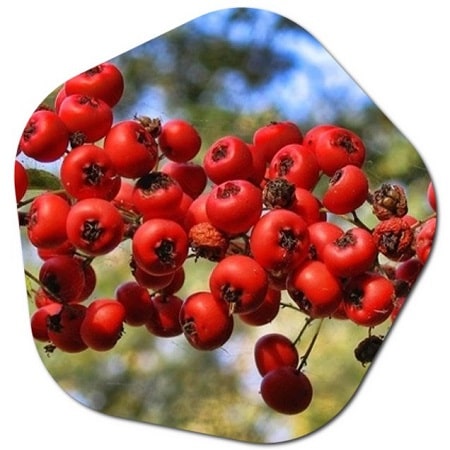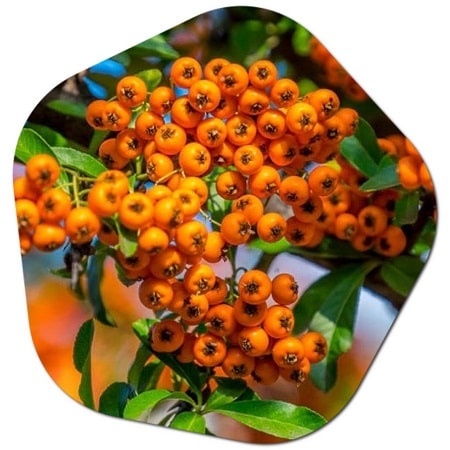It grows naturally from Europe to Africa. It is 4-8 m tall and the crown is 3 m wide. It is a round shaped tree. It has 2-2.5 cm long shoots with single thorns. Summer green leaves are 3-7-lobed, broad-ovate, 4-5 cm long. The lobes are deep and the tips are blunt, pointed, simple or double toothed. The upper side of the leaves is dark, the lower side is gray green or whitish green and hairy. Lateral leaves are completely rounded. The flowers blooming in May and June are white in color and the flower board is umbrella-shaped. It consists of 12-18 flowers. Globular fruits are dark red, yellow orange, shiny and single-seeded. It grows well in hot and dry continental climates, in sunny or shady places, on normal and acidic loam soils. Resistant to shade and urban climate. It is a pioneer and a good hedge plant. It is used in groups or solitary for windbreaks, fixing sandy and mineral soils, greening slopes, slopes and refuges. It has a plastic appearance and is decorative.
Campsis radicans, commonly known as Trumpet Vine, is a beautiful flowering plant. Here’s how it grows and how to care for it:

- Growing Conditions:
- Campsis radicans thrives in full sun to partial shade.
- It prefers well-draining soil and can tolerate moderate drought once established.
- Planting:
- Plant it in an area with a robust support structure, like a wall or trellis, as it’s a vigorous climber.
- Watering:
- Water as needed; they like moderate soil moisture, but they have good drought tolerance once established. Water deeply when the soil is dry to a one-inch depth during dry spells.
- Pruning:
- Prune regularly to control its growth and shape. It can be invasive, so maintenance is essential to prevent it from spreading too much.
- Fertilizing:
- Providing extra feedings can enhance flowering. You can use a balanced fertilizer to promote blooming.
Remember that Trumpet Vines can be invasive, so take care to manage their growth and ensure they have suitable support structures.
What is Crataegus monogyna used for?
Crataegus monogyna, commonly known as common hawthorn, is a plant that has been traditionally used for various purposes, including medicinal, culinary, and ornamental. Some of its common uses include:
- Traditional Herbal Medicine: Common hawthorn has a long history of use in traditional herbal medicine. It is often used to support heart health, particularly for conditions such as congestive heart failure, angina, and high blood pressure. It is believed to improve blood flow, strengthen the heart’s contractions, and enhance overall cardiovascular health.
- Cardiovascular Health: Hawthorn extracts and preparations are used to promote cardiovascular health. They are believed to have vasodilatory effects, meaning they help dilate blood vessels, which can improve circulation and reduce blood pressure. This can be especially beneficial for individuals with mild heart conditions.
- Antioxidant Properties: The berries and leaves of common hawthorn contain antioxidants, such as flavonoids, which help combat oxidative stress and may reduce the risk of chronic diseases by protecting cells from damage.
- Cholesterol Management: Some studies suggest that hawthorn extracts may help lower LDL (“bad”) cholesterol levels in the blood, which is associated with a reduced risk of heart disease.
- Digestive Health: Hawthorn is sometimes used to support digestive health by alleviating symptoms of indigestion and bloating. It has a mild diuretic effect and may help improve digestion.
- Anxiety and Stress: Common hawthorn has a history of use in traditional medicine for its calming effects on the nervous system. It may help reduce symptoms of anxiety and stress.
- Culinary Uses: The berries of the hawthorn tree can be used to make jams, jellies, and teas. They have a tart and slightly sweet flavor. Additionally, hawthorn flowers are sometimes used to make beverages and desserts.
- Ornamental Plant: Common hawthorn is planted as an ornamental tree in gardens and parks for its attractive foliage, clusters of white or pink flowers, and bright red berries, which add to its aesthetic appeal.

It’s important to note that while common hawthorn has a history of traditional use for these purposes, scientific research on its efficacy is ongoing, and more evidence is needed to establish its effectiveness in treating specific medical conditions. If you are considering using hawthorn for any medicinal purpose, it’s advisable to consult with a healthcare professional, especially if you have underlying health conditions or are taking medications, as hawthorn may interact with certain drugs. Always follow recommended dosages and guidelines for use.
Is Crataegus good for the heart?
Crataegus, commonly known as hawthorn, has a longstanding traditional use in herbal medicine for heart health, and there is some evidence to suggest that it may be beneficial for various aspects of cardiovascular health. Here’s how Crataegus can be good for the heart:
- Heart Health Support: Hawthorn is often used to support heart health, particularly for individuals with mild heart conditions. It may help improve blood flow, strengthen the heart’s contractions, and enhance overall cardiovascular health.
- Blood Pressure Regulation: Hawthorn extracts and preparations have been used to lower blood pressure, making it potentially beneficial for individuals with mild hypertension.
- Heart Rhythm Stabilization: Hawthorn is believed to have a stabilizing effect on heart rhythm, which can be helpful for those with irregular heartbeats (arrhythmias).
- Antioxidant Properties: The antioxidants found in hawthorn, including flavonoids, can help combat oxidative stress. Reducing oxidative stress is important for maintaining a healthy heart and reducing the risk of cardiovascular diseases.
- Cholesterol Management: Some studies suggest that hawthorn extracts can help lower LDL (“bad”) cholesterol levels in the blood. Lowering LDL cholesterol is associated with a reduced risk of heart disease.
- Vasodilation: Hawthorn is believed to have vasodilatory effects, meaning it helps dilate blood vessels, improving blood flow and circulation. This can reduce the workload on the heart and potentially lower blood pressure.
- Anxiety and Stress Reduction: Traditionally, hawthorn has been used for its calming effects on the nervous system, which may help reduce symptoms of anxiety and stress.
It’s important to note that while hawthorn has a history of traditional use for heart health, and there is some scientific evidence to support its potential benefits, it should not be used as a replacement for prescribed medications or treatments for serious heart conditions. If you have heart-related issues or are taking medications, it’s crucial to consult with a healthcare professional before using hawthorn or any herbal remedy. They can provide guidance on whether it’s appropriate for your specific situation and help determine the correct dosage and usage. Maintaining a healthy lifestyle, including a balanced diet and regular exercise, is also essential for overall heart health.
When to Plant Hawthorn Tree?
The hawthorn tree can be planted as grafted open root, usually from the first and second week of November. Accordingly, hawthorn trees can be planted comfortably from the beginning of November until the end of April. Hawthorn trees should be planted four meters apart. In this way, yield is also increased.
Where Does Hawthorn Tree Grow?
Hawthorn trees generally grow in forested areas and along streams. Hawthorn trees, which grow frequently in Europe and Asia, grow spontaneously in the natural environment. When planting a hawthorn tree, the soil should also be lightly crushed. Organic fertilizers should be made in hawthorn trees, usually in spring. Benefits of the Crataegus monogyna tree? Hawthorn Fruit >>


One thought on “What is the Crataegus monogyna plant? What are the benefits?”